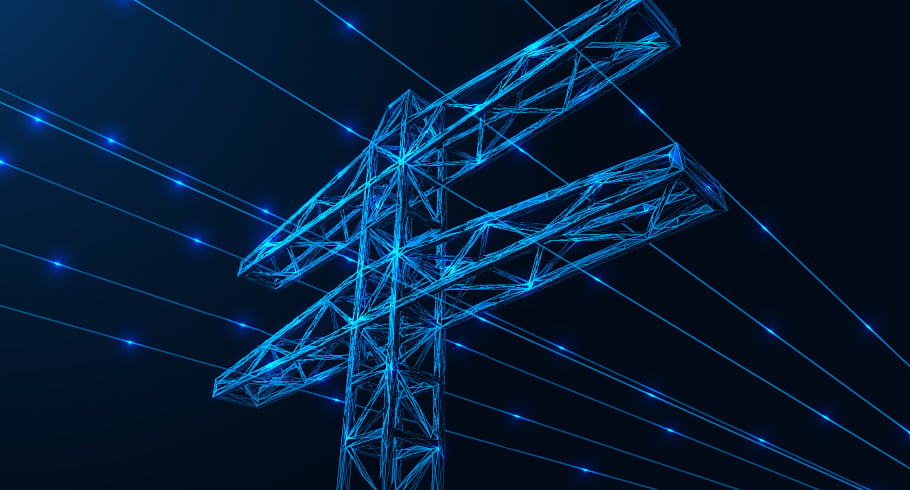When we look to the future of the UK’s energy system, it is clear that businesses who are able to invest in on-site generation and other low-carbon technologies - including those in Energy Intensive Industries (EIIs) - will have an important role to play. While there are challenges and risks, particularly in the context of the recent energy crisis, there are also opportunities.
Innovation lies at the heart of decarbonisation
When it comes to decarbonising EIIs and deploying more renewable and low-carbon technologies on-site, innovation will be key. It’s important to acknowledge that the consumption of energy in these industries is very large, so they either need to have really big sites or they still need to buy-in electricity, heat or gas from other sites to fulfil the energy demand for their manufacturing process. And, alongside high energy costs, there is also the need to factor in high carbon costs, particularly if the UK price is higher than overseas.
That said, industries such as steel, chemicals, glass and other energy intensive manufacturers are always looking at ways they can improve their energy efficiency and decarbonise their operations on-site, and some have the potential to export this electricity to the grid.
Grid concerns
However, while there are challenges with deploying on-site renewables and low-carbon technologies, our members are telling us that one of the major issues that needs to be addressed is grid connection.
Even if EIIs have on-site generation, if they want to export it, having the right capacity of connection to the grid is essential. Unfortunately, the risk is that the connection may not be there, and even if it is, there is the possibility that the Distribution Network Operator (DNO) may not have the infrastructure to manage it. As a result, capacity constraints may deter business plans to put more on-site power in EIIs.
What other challenges do EIIs face?
Another issue affecting our members is the increase in balancing costs. According to National Grid, balancing costs have gone up significantly, and Ofgem has consulted on introducing a new licensing condition to minimise some of the costs associated with balancing. However, with the increased intermittency of renewables and the increased capacity of renewables on the system, balancing costs are likely to increase as well.
So, for EIIs with an interest in carbon capture, utilisation and storage (CCUS), hydrogen and electrification, while we know the government is developing business models for CCUS and hydrogen, the policy framework is not quite there yet.
What needs to happen to ‘unlock’ the power potential of EIIs in the next five to ten years?
For EIIs there are three key areas:
1. Increased capital support
Providing more capital support for the electricity intensive decarbonisation technologies, in similar way to how the government has supported decarbonising the grid with renewables, could unlock more potential. Energy intensive manufacturing processes also tend to be capital intensive.
In theory, you can electrify any manufacturing process up to a certain standard – it’s just that there is little commercial incentive, particularly when the energy prices are so high compared to other countries.
The removal of the various levies on electricity prices would also be a help to support the electrification of EIIs where possible, bearing in mind that hydrogen and CCUS are also electricity intensive processes. Moving financing from levies on electricity prices to direct government support is more equitable and reduces the risk of carbon leakage.
2. Accelerating policy to support innovation
For EIIs, having a robust policy framework that supports and incentivises innovation in low-carbon technologies, such as electrification, hydrogen and CCUS is key.
There is also scope to use the embodied carbon in manufactured goods, but the government is not quite there yet in terms of what policies it might introduce to increase material efficiency in this way.
Finally, to truly unlock the power potential of businesses, there needs to be enough support for the grid so it can cope with the increased capacity that these electricity intensive technologies require.
3. Reduce the risk of carbon leakage
Finally, there is the need to address the risk of carbon leakage. The government has consulted on a net zero target consistent carbon price in the UK, but without any additional measures that would mitigate its risk. So if you unilaterally put up the carbon price compared with everybody else, then the risk of carbon leakage will increase. Carbon border adjustment mechanisms or product standards are not quite developed enough yet, but it’s things like this that would help.
In short, EIIs will play a role in a zero-carbon energy system by 2035, but there needs to be additional incentives and clearer policy to support it.
For more information, read our report, The Future of Energy: The critical role of business in a net zero world, here.


/npm214%20Digital_H_UB15.jpg)

/npm214%20Digital_H_UB100.jpg)

/npm214%20Digital_H_UB102.jpg)

/npm214%20Digital_H_UB76.jpg)
/npm214%20Digital_H_UB139.jpg)

